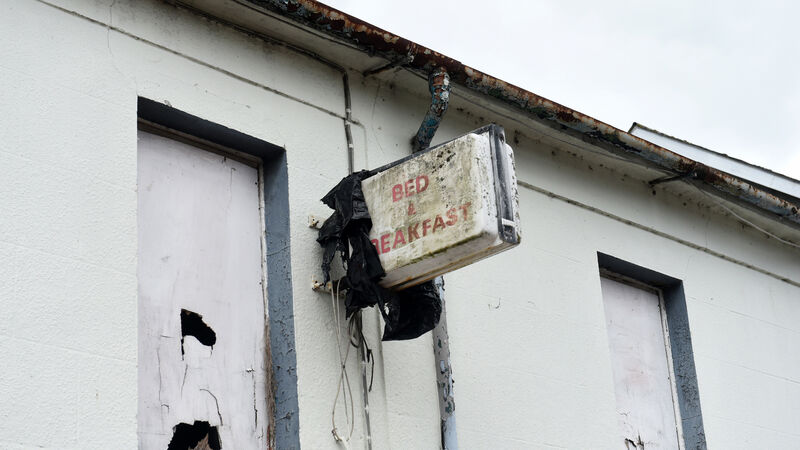Irish Examiner view: Pressure is rising in the market for homes

An Old B&B sign hangs over a vacant property; tax levels on Ireland’s 180,000 vacant homes are being talked up to rise by five times next year; the vacancy tax will be tied to the value of the property. Pic Larry Cummins
All the usual suspects were present in the 160-page, 2030-pledge Housing for All strategy, launched with some fanfare last week — social housing, the rental market, start-up mortgages, affordable housing (although what is meant by “affordable” in real terms remains a mystery), planning restrictions, nimbyism, annual targets, the malign impact of investment funds grabbing new properties, and so on.
However, our regular series, 'Ireland’s Empty Towns', which today looks at Tipperary, reinforces that it is in the stock of empty buildings and vacant homes where the swiftest response may be found to an issue that the Taoiseach and Fianna Fáil are banking on to be an electoral vote-winner.
Many of the other measures look to be mid- to long-term in a market that is already taking off.
Where are the swift wins?
Auctioneers report that house prices have increased by 6.35% in the first half of this year, which suggests that they will be 12% higher year-on-year by the time we get the Christmas lights on the trees.
Some homes — perhaps surprisingly in view of warnings about climate change — that are near lakes, rivers, and the sea have already experienced double-digit percentage price increases.
With this degree of overheating taking place, and likely to increase because the popularity of working from home is not going to subside, it is not a surprise that tax levels on Ireland’s 180,000 vacant homes are being talked up to rise by five times next year; the vacancy tax will be tied to the value of the property.
There will be exemptions where there is a “legitimate reason for the property being empty”, but these are not well defined at the moment.
It is not intended that people with second homes will be penalised by new fiscal policies, or that it should handicap people who move away for temporary work.
However, the devil is in the detail and one of the recurring themes in the housing debate is the lack of a rapidly updating and connected register that audits land use for domestic provision, and assesses the size of the opportunity for change and consequential progress.
If there is to be a cohesive, all-government plan, as our political leaders say, the information that underpins it has to be topical and relevant.
Demonstrating the determination to join up all the dots from which a relevant set of actions can be implemented is something that could start immediately.












